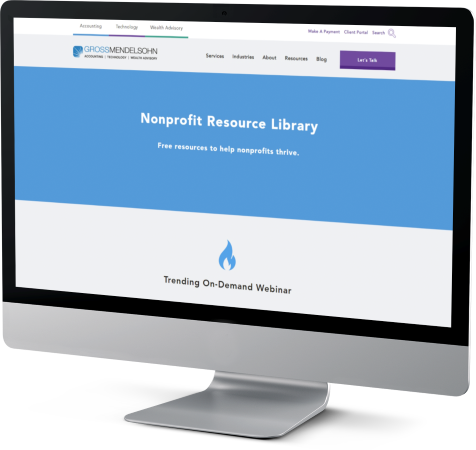Losing your nonprofit’s executive director is a lot like losing your trail guide in the middle of the forest – slightly terrifying, completely disorienting and leaving you wishing you’d spent more time watching which turns your guide had made along the way. For most nonprofits, executive level turnover can be a challenging and chaotic time for the entire organization, leading to operational and managerial speed bumps, uncertainty for the future and headaches for board members.
The majority of nonprofits have no plan as to how they will handle the loss of their organization’s director. This leaves them scrambling when inevitable turnover comes to pass because all of a sudden they have a limited amount of time to answer crucial questions like:
- Are we going to promote within or look outside of the organization for our next director?
- Who will lead the organization until a new director can be found?
- Is our board prepared (i.e., do they have the right skill sets) to lead the search for a new director?
- Who’s going to take over the auxiliary duties the old director has been overseeing for the past ten years and the new director isn’t qualified to undertake?
However, executive turnover doesn’t have to be chaotic. In fact, nonprofits can ensure a smoother transition from leader to leader by developing and maintaining a succession plan – a plan to develop and identify new leaders before a leader’s departure.
Get articles like this delivered straight to your inbox when you subscribe to our nonprofit blog.
In the nonprofit world, executive directors and board members can be hesitant to bring up succession planning, either because the director doesn’t want to reveal he or she is thinking of leaving, or the board doesn’t want to suggest they want the director gone. However, succession planning isn’t just for instances of turnover.
A succession plan can come into play even in emergency or temporary periods of absence, like if the director is in an accident or has a family crisis that requires a long period of time out of the office. In these instances, board members can rely on the plan they’ve created to know who will be responsible for what until the director returns.
Here are a few tips on how to get started on your organization’s first succession plan.
1. Identify Future Leaders
Even if your organization’s executive director has no intention of leaving, it’s wise to keep an eye out for future leadership talent already working within your nonprofit. Remember, a succession plan isn’t always just about routine turnover, but also emergency situations that may require you to name an interim director or replace a director with little notice.
By identifying which employees would do well in an executive roles, you are able to start grooming those employees to take on more responsibility in your organization, better preparing them for future leadership opportunities.
2. Decide Who Is Doing What
One key component of a succession plan is identifying who will be responsible for what until leadership can be restored. For example, your board treasurer may agree to take over any accounting responsibilities the director had on their plate until a new leader can be found. You should also consider less obvious responsibilities, like who will talk to the media, interact with building management, etc. if your director is responsible for those tasks.
3. Evaluate the Responsibilities of the Current Position
In many cases, a long-term executive director has accumulated so much responsibility that it becomes difficult or impossible for them to focus their energy where it really counts – leading the organization. In the succession planning process, it’s important for leadership and the board to evaluate the current executive director’s responsibilities and decide whether it is strategic to make a hire or two to lighten the burden. This will make a tremendous difference when transitioning leadership, by ensuring the next director can focus on leading rather than spinning their wheels trying to accomplish unrelated duties they inherited.
Remember, while your current executive director may come from X background and therefore manages X tasks outside of his or her official duties, your next executive director may not have those same skills. By identifying gaps before transitioning, you are able to save your organization a lot of time and energy trying to segregate duties after the fact or trying to find a candidate who meets an impossible roster of qualifications.
4. Be Prepared to Revisit the Plan
Succession planning is not a one and done activity to be undertaken at your next board retreat. To ensure your organization is well equipped to weather the storm of executive turnover, you must be committed to keeping your organization’s succession plan as up-to-date as possible. That means revisiting the plan on a regular basis to ensure that all of your bases are still covered and make updates where needed.
Where Do I Go From Here?
Even the best nonprofit executives, board members and staff must commit to staying up-to-date on today’s best practices. To get new articles emailed to your inbox as they are published, subscribe to our free nonprofit blog. You can also visit our nonprofit resource library for free downloadable templates, articles, videos and other tools to keep you up to date.
Need Help?
If you're ready to develop your succession plan now, contact us online or call 800.899.4623 to talk with one of our succession planning experts.


